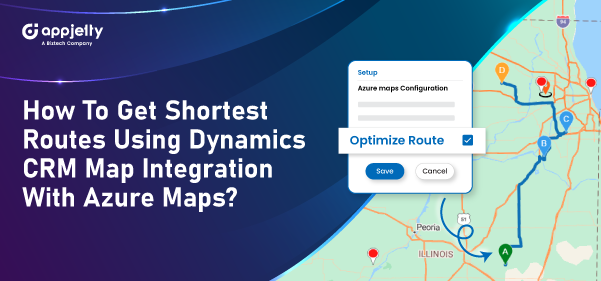Saving and earning money at the same time might seem impossible, right? But it’s not!
The number one challenge for any company with an on-field sales team is the amount of money and time lost due to sales reps not knowing the shortest routes or traffic conditions. This issue can be resolved with a single feature: Shortest Path First (SPF).
In this blog, we will demonstrate how you can enable this feature in your Dynamics CRM map integration and how your sales reps can use it effectively.
For demonstration purposes, we’ve used MappyField 365, but you can explore Microsoft AppSource to find a suitable Dynamics 365 map integration.
Follow these steps to enable SPF and manage routes:
1. Enable the Optimize Route option
2. Plot the records and define the routes
3. Set routes based on SPF
4. Save and manage the routes
Step 1: Navigate to MappyField 365 After logging into Dynamics 365, click on “MappyField 365” from the Dynamics 365 Apps dashboard.
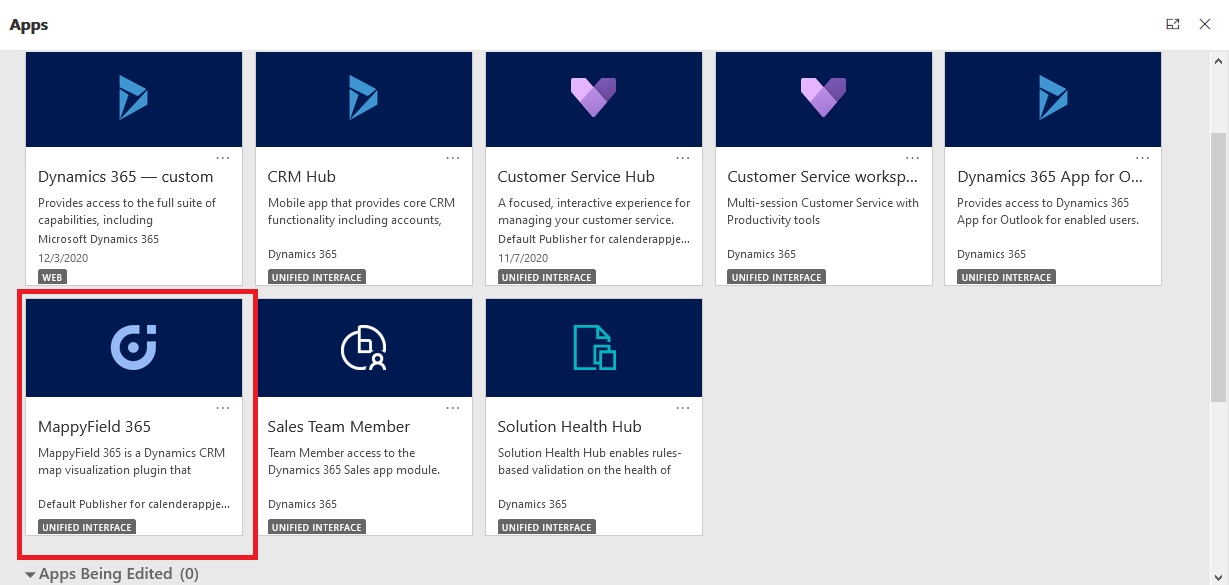
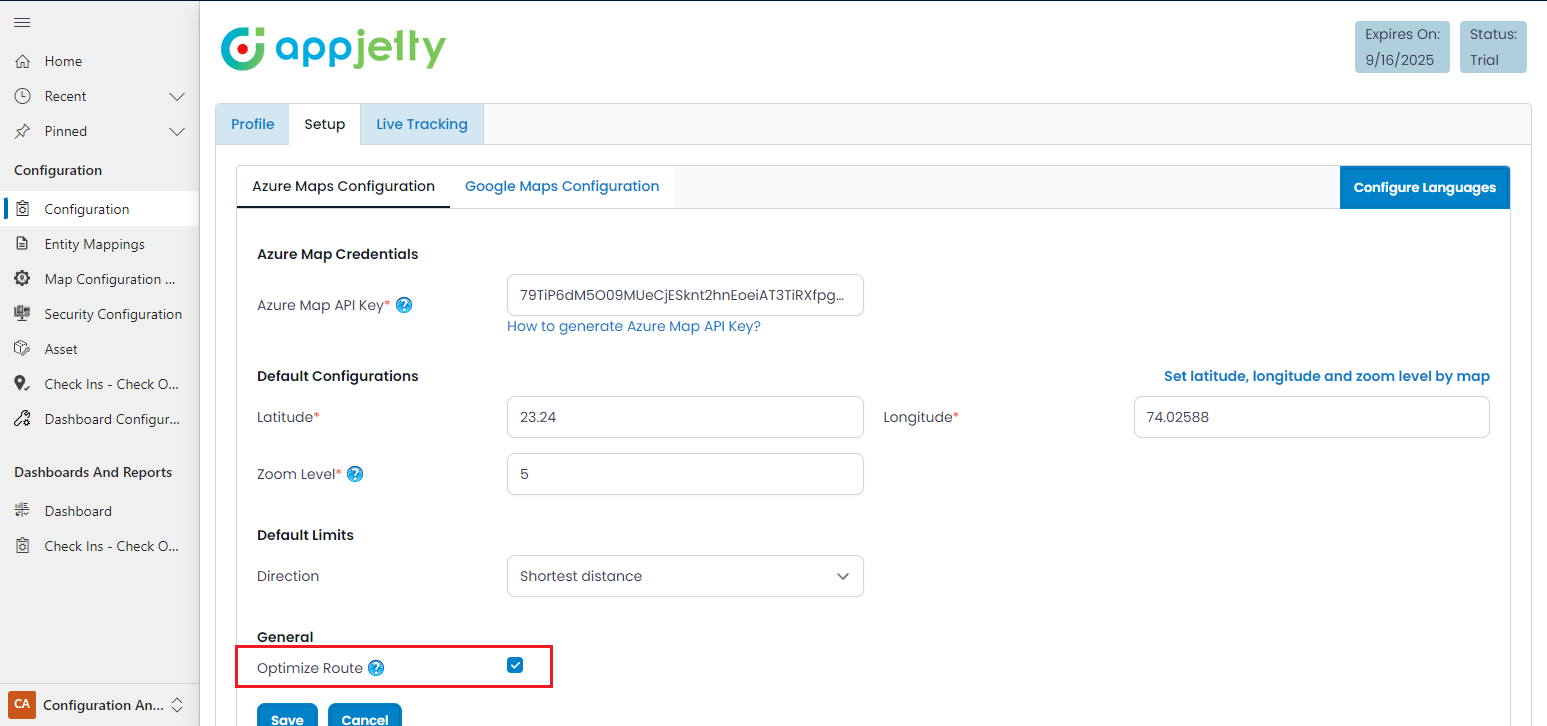
Step 3: Redirect to Map and define route on the map
Define the ‘Routes’ by selecting the required records based on the Origin and Destination. Alternatively, you can define the Route by entering the place name under the ‘Routes’ tab.
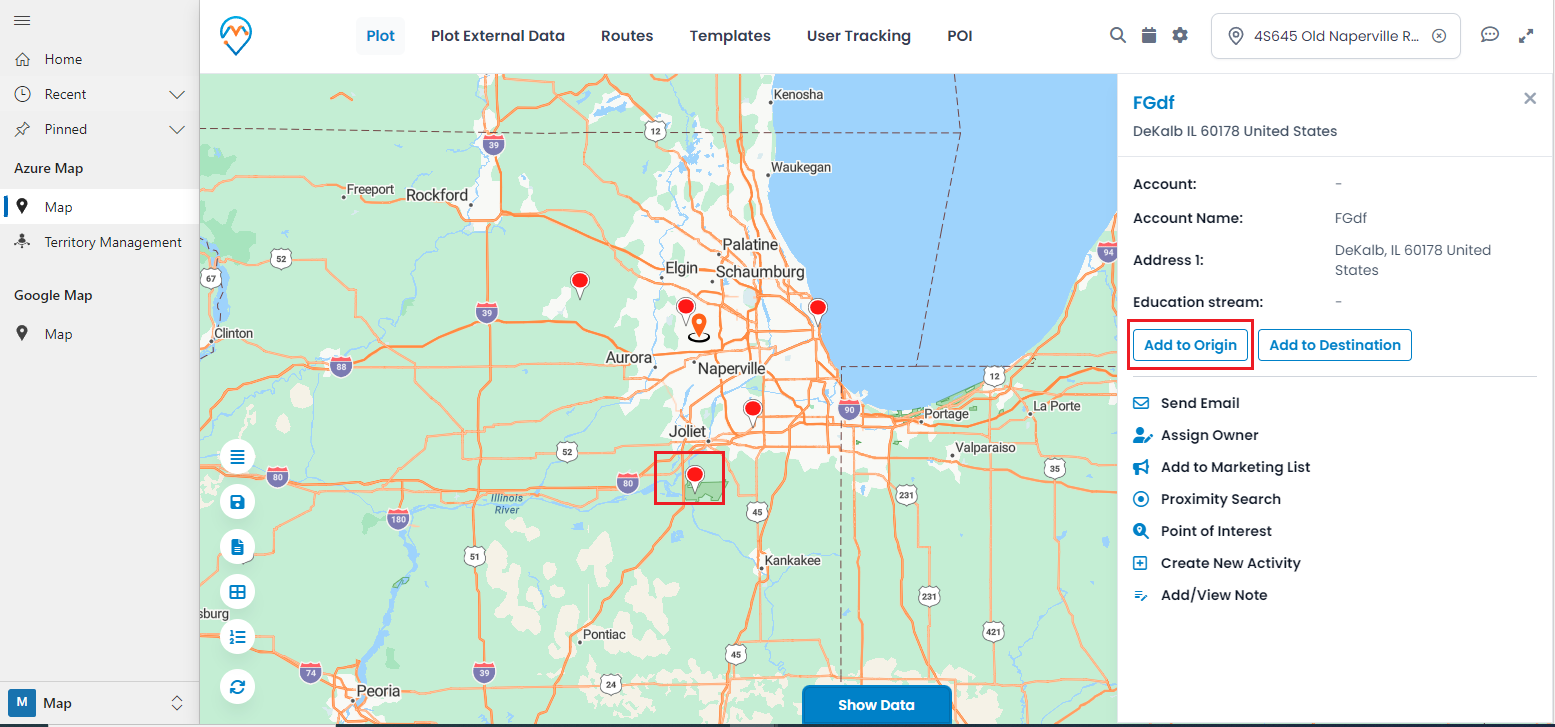
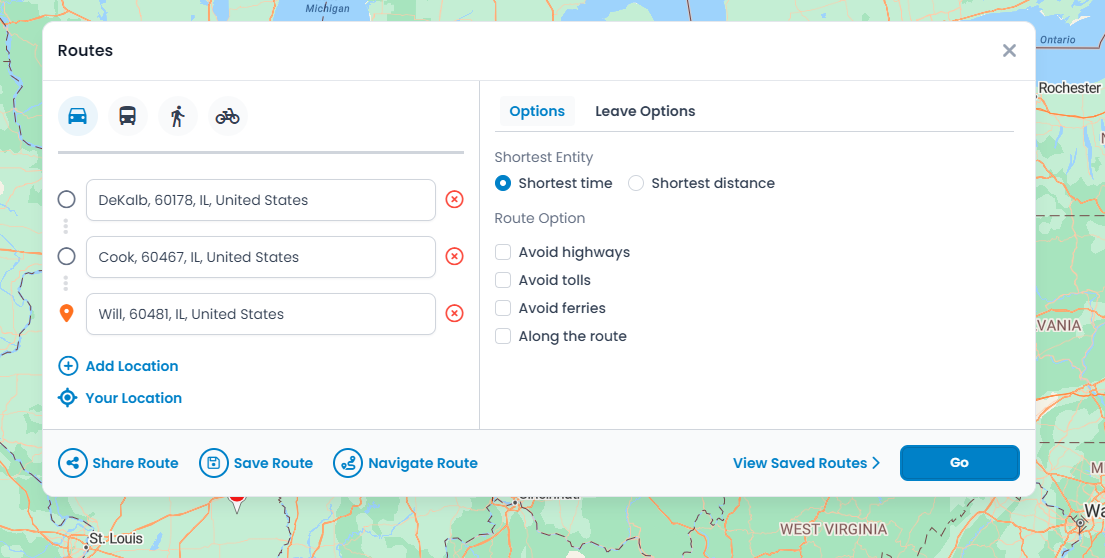
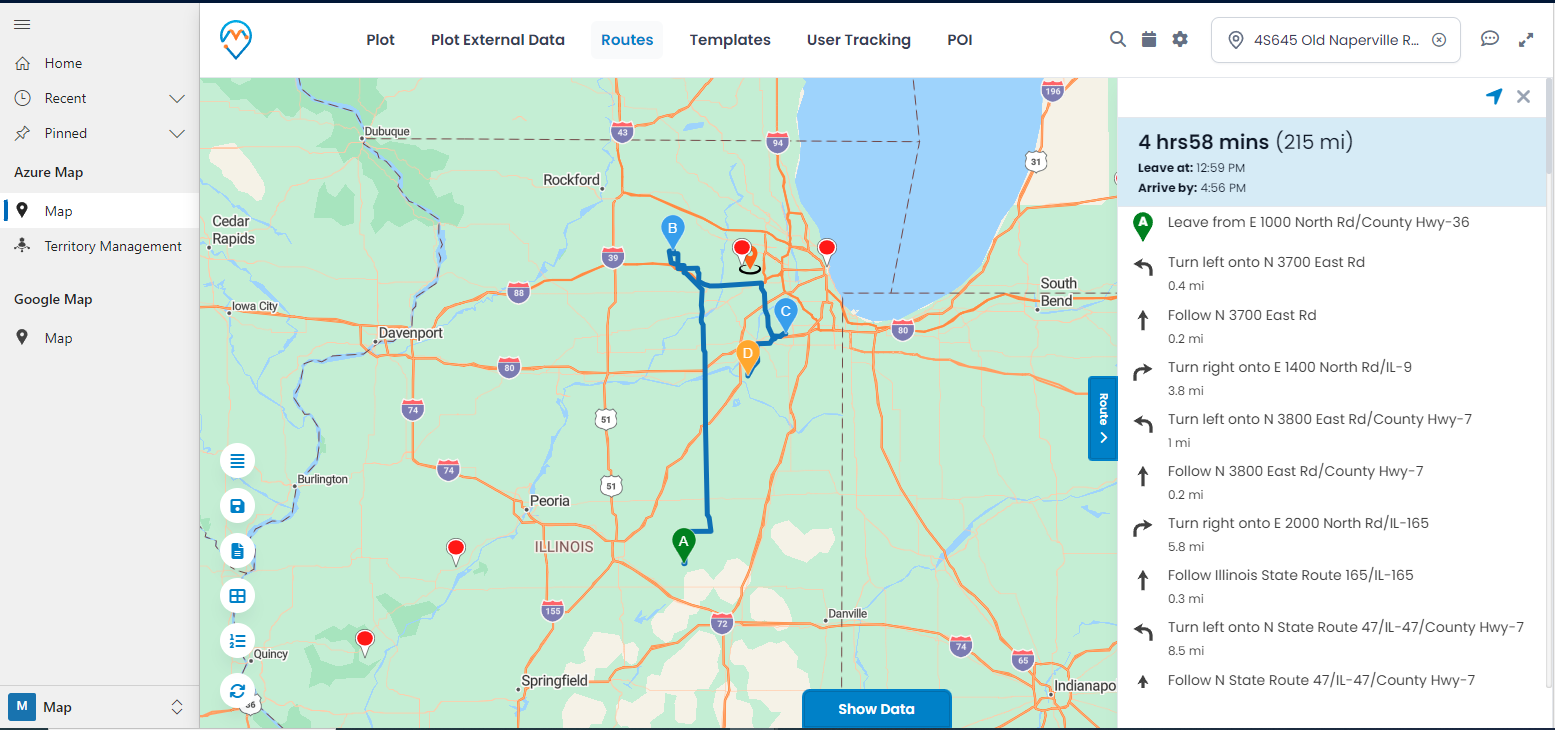
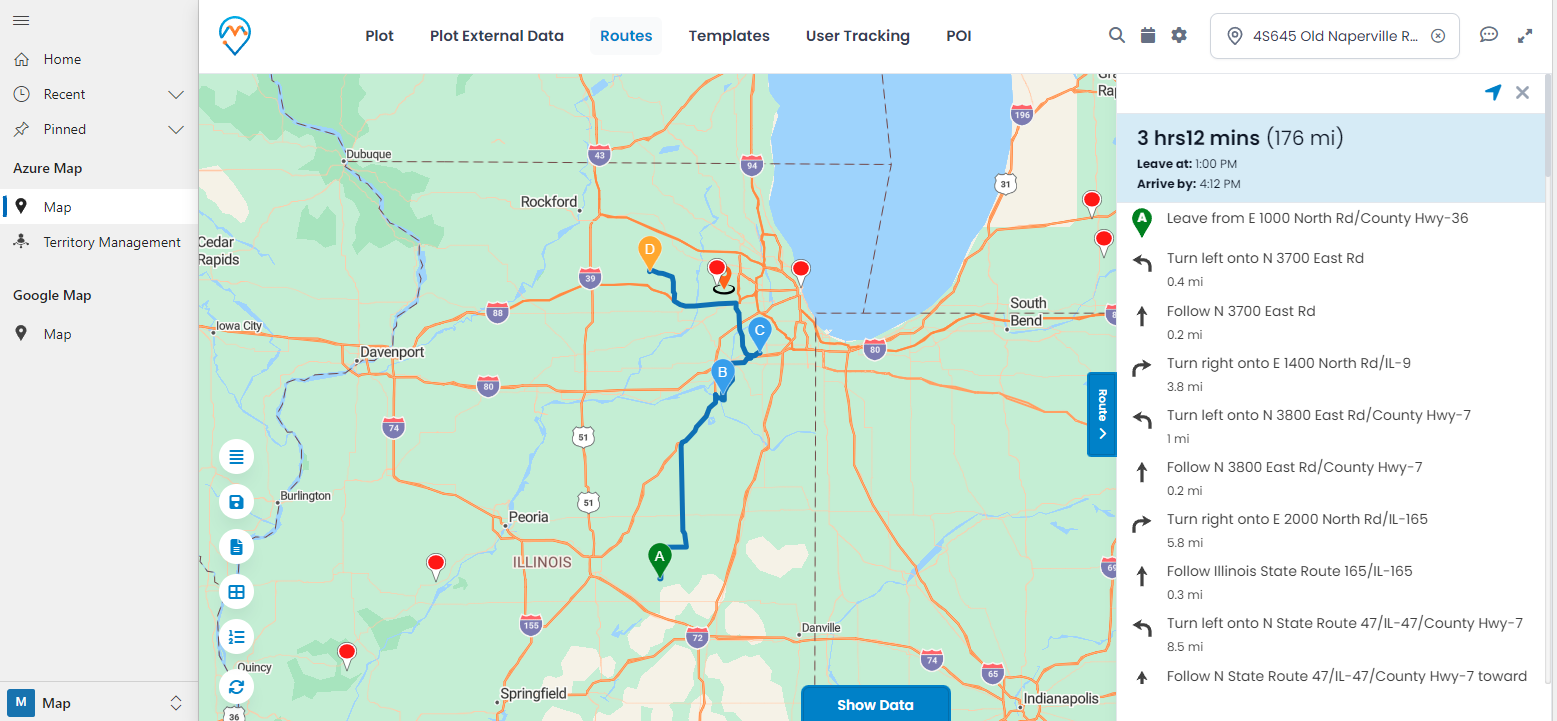
To save the selected route, go to the “Routes” menu and click the save icon.
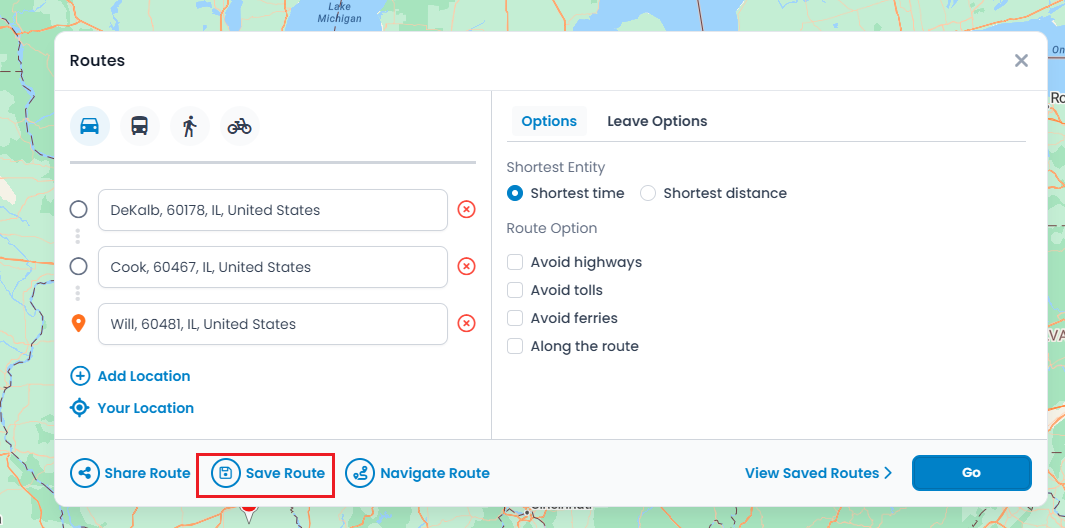
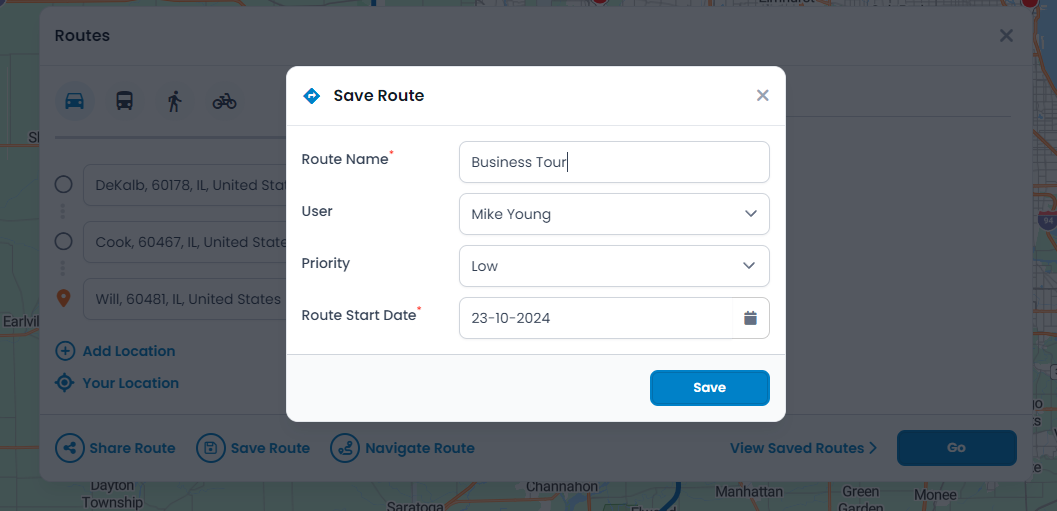
To view the saved routes, navigate to “View Saved Routes.” Clicking on “View Saved Routes” will display the detailed slider on the right.
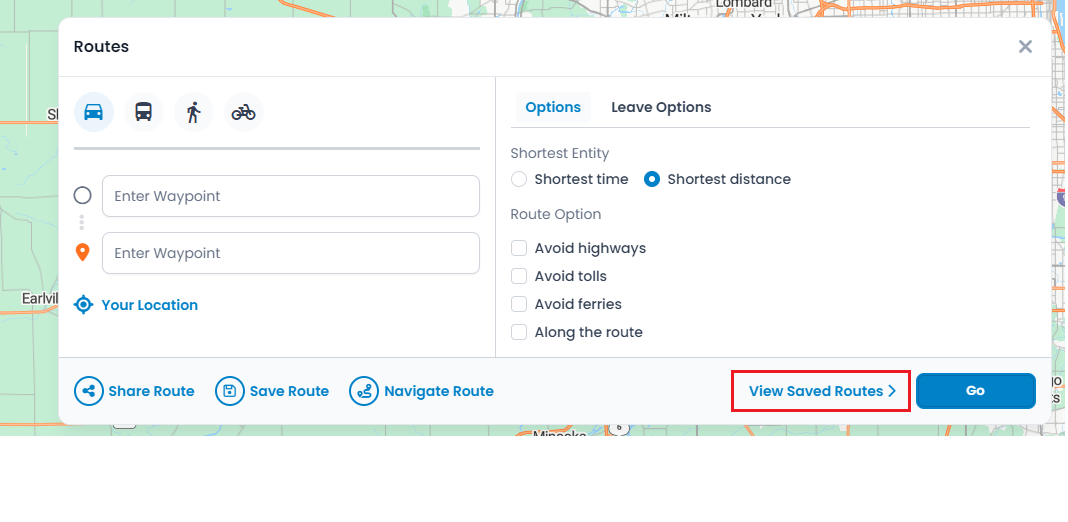
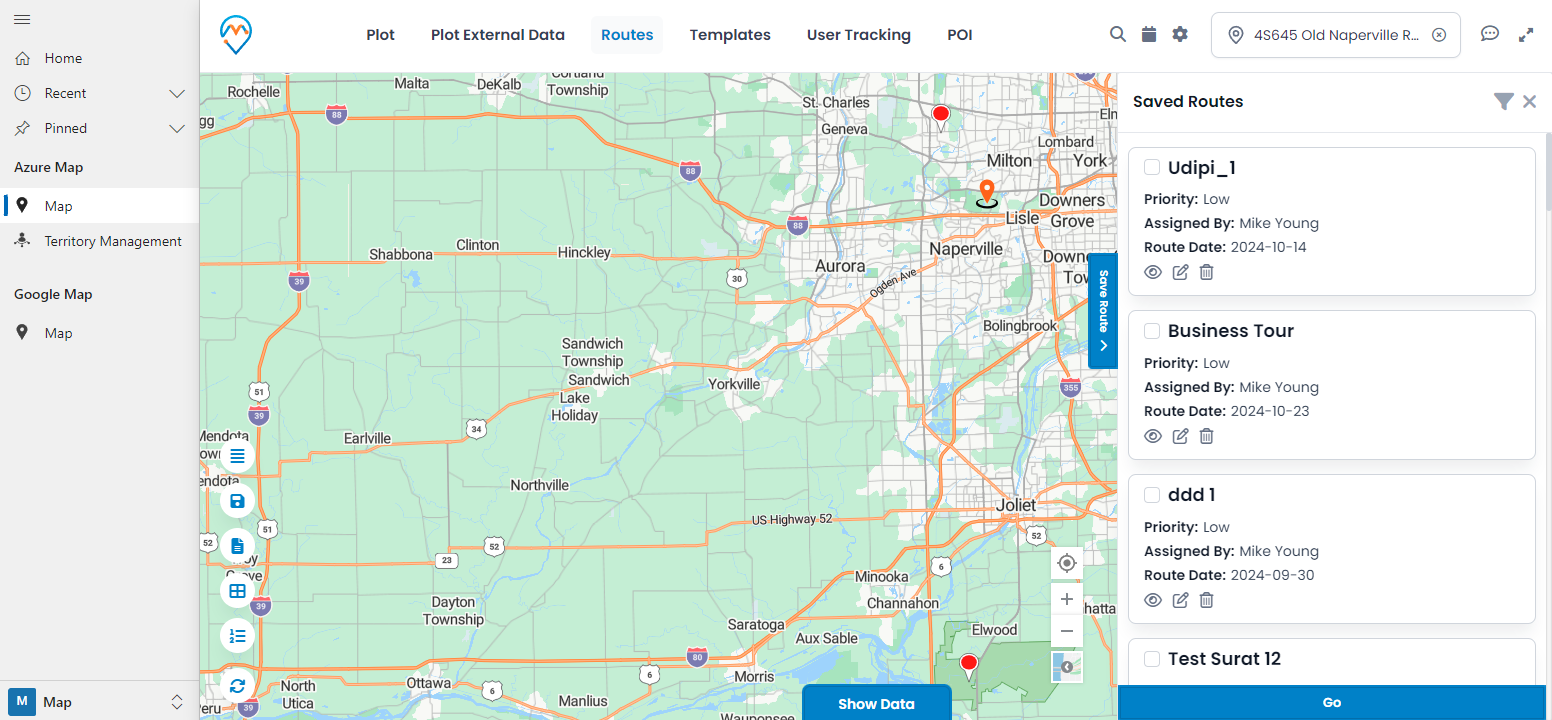
Users can check their assigned routes on the default MappyField 365 dashboard under the ‘Reporting Dashboard,’ where the priority of each route is also displayed.
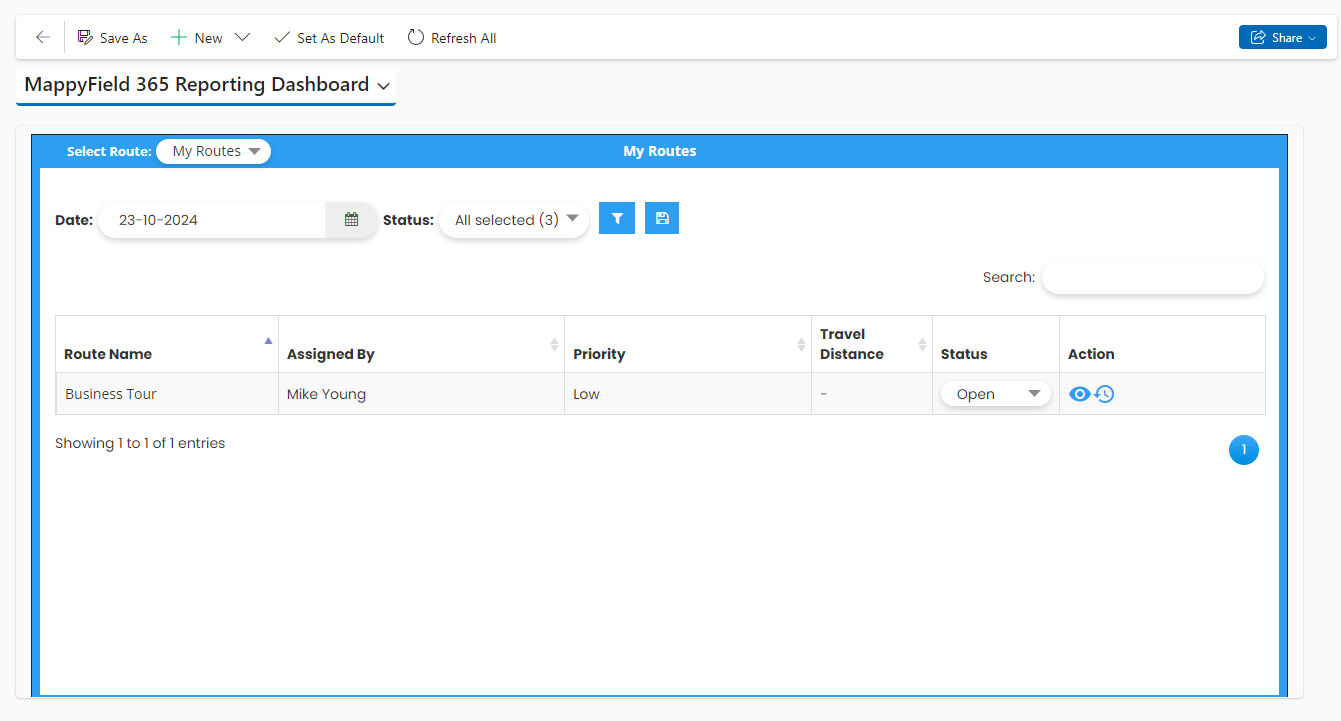
All product and company names are trademarks™, registered® or copyright© trademarks of their respective holders. Use of them does not imply any affiliation with or endorsement by them.


